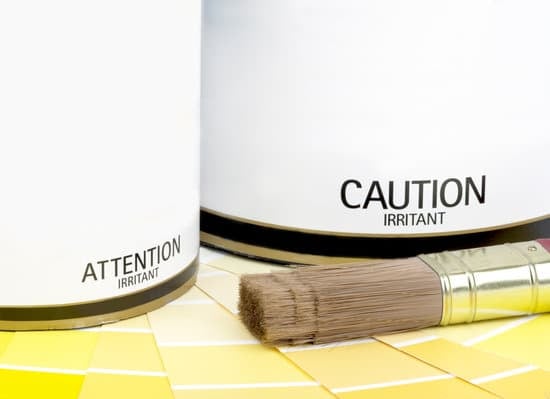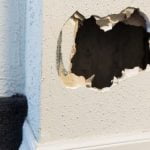Are you looking to make energy-efficient improvements to your home? One way to help offset the costs is by taking advantage of the Energy Efficient Home Improvement Credit. This tax credit can provide financial incentives for making qualified energy-saving upgrades to your home. In this article, we will explore what qualifies for the credit, how to claim it, its limitations and restrictions, as well as its benefits.
When it comes to making your home more energy efficient, there are various options available. From upgrading insulation and windows to installing solar panels or purchasing Energy Star certified appliances, there are many ways to improve your home’s energy efficiency. The Energy Efficient Home Improvement Credit aims to reward homeowners who take these steps towards a greener and more sustainable living.
By understanding what qualifies for the credit and how to claim it, homeowners can potentially save money on their taxes while also positively impacting the environment. In this article, we will delve into the specifics of this tax credit, including eligible home improvements and required documentation for claiming the credit.
Whether you’re considering making energy-efficient upgrades or have already done so, knowing about this tax credit can be beneficial in maximizing your savings while contributing to a more sustainable future.
What Qualifies for the Energy Efficient Home Improvement Credit
The Energy Efficient Home Improvement Credit provides homeowners with an incentive to make energy-saving improvements to their homes. These improvements can lead to lower energy bills and a reduced environmental impact. When considering which home improvements qualify for the credit, it’s important to understand the types of eligible projects and the use of Energy Star certified products.
Types of Eligible Home Improvements
To qualify for the Energy Efficient Home Improvement Credit, homeowners can consider a variety of energy-saving upgrades to their homes. This can include the installation of energy-efficient windows and doors, upgrading insulation, installing solar panels or solar water heaters, and replacing heating, ventilation, and air conditioning (HVAC) systems with more efficient models.
Energy Star Certified Products
In addition to specific home improvement projects, using Energy Star certified products is an important factor in qualifying for the credit. This includes appliances such as refrigerators, dishwashers, washers, and dryers that meet the Energy Star efficiency criteria. It’s essential for homeowners to review the Energy Star requirements when selecting products for their home improvements in order to ensure eligibility for the credit.
By focusing on these types of eligible home improvements and utilizing Energy Star certified products, homeowners can take advantage of the Energy Efficient Home Improvement Credit while also making their homes more energy-efficient and environmentally friendly.
How to Claim the Energy Efficient Home Improvement Credit
The Energy Efficient Home Improvement Credit can provide homeowners with valuable tax incentives for making energy-saving upgrades to their homes. If you have made eligible improvements to your home, you may be wondering how to claim this credit. Here’s what you need to know:
- What forms to use: To claim the Energy Efficient Home Improvement Credit, you will need to fill out Form 5695, Residential Energy Credits. This form will allow you to calculate the amount of credit you are eligible for based on the improvements made to your home.
- Documentation required: In addition to Form 5695, you will need to retain documentation of the costs of the improvements and any Energy Star products installed. This may include receipts, invoices, or manufacturer certifications.
It’s important to note that claiming the Energy Efficient Home Improvement Credit requires careful documentation and attention to detail. Failing to provide adequate proof of your eligible expenses could result in a denied claim or an audit by the IRS.
In addition, it’s recommended to keep a record of any other tax credits or incentives you have taken advantage of for home improvements. This can help ensure that you are maximizing your potential savings and avoiding any errors when filing your taxes. By staying organized and informed about the requirements for claiming the Energy Efficient Home Improvement Credit, you can make the most of this valuable financial benefit while also reducing your environmental impact.
Limitations and Restrictions of the Credit
The Energy Efficient Home Improvement Credit offers homeowners the opportunity to make energy-saving improvements and receive a credit on their taxes. However, there are several limitations and restrictions that individuals should be aware of when claiming this credit.
Firstly, the maximum amount of the credit is $500 for the tax year, subject to certain limits. This means that even if a homeowner invests more than $500 in eligible home improvements, they will only receive a credit of up to $500. Additionally, there are income limits that may affect an individual’s eligibility for the credit. It’s important for homeowners to review these limits before claiming the credit.
In order to claim the Energy Efficient Home Improvement Credit, homeowners will need to use specific forms when filing their taxes. The IRS Form 5695 is used to calculate and claim the residential energy credits, including the Energy Efficient Home Improvement Credit. In addition to filling out this form, documentation of the purchases and installation of qualifying products or materials will be needed as proof when claiming the credit.
It’s important for homeowners to understand these limitations and restrictions in order to maximize their potential benefits from the Energy Efficient Home Improvement Credit. By being knowledgeable about how much credit they can receive and what documentation is required, individuals can take full advantage of this opportunity to save money and make eco-friendly home improvements.
Benefits of the Energy Efficient Home Improvement Credit
The Energy Efficient Home Improvement Credit offers a range of benefits for homeowners considering making energy-efficient upgrades to their homes. These benefits not only include saving money on energy costs, but also have a positive impact on the environment.
How It Can Save You Money
One of the main benefits of the Energy Efficient Home Improvement Credit is the potential for significant cost savings on energy bills. By making qualifying home improvements, such as installing energy-efficient windows, doors, insulation, or HVAC systems, homeowners can reduce their energy consumption and lower their monthly utility bills. Additionally, the credit itself can help offset some of the initial costs associated with these improvements, making them more affordable in the long run.
Environmental Impact
In addition to personal financial savings, participating in the Energy Efficient Home Improvement Credit program can have a positive environmental impact. By reducing overall energy usage through improved efficiency, homeowners can decrease their carbon footprint and contribute to environmental conservation efforts. This credit encourages individuals to make eco-friendly choices for their home renovations, ultimately leading to a healthier and more sustainable planet.
Long-Term Value
Not only do these energy-efficient upgrades offer immediate savings on utility bills, but they also add long-term value to a home. When it comes time to sell a property, having energy-efficient features in place may make it more appealing to potential buyers and increase its resale value. Therefore, taking advantage of the Energy Efficient Home Improvement Credit not only benefits homeowners in the short term but also provides lasting advantages for years to come.
Case Studies
One real-life example of a homeowner who has benefited from the Energy Efficient Home Improvement Credit is Sarah, a single mother of two. Sarah decided to invest in energy-efficient upgrades for her home, including installing new windows and doors, adding insulation, and upgrading to an Energy Star certified HVAC system.
As a result, Sarah was able to claim the credit on her taxes and received a significant reduction in her tax liability. Additionally, she noticed a decrease in her monthly utility bills, which ultimately saved her money in the long run.
Another case study involves John and Lisa, a retired couple on a fixed income. They were initially hesitant to invest in energy-efficient home improvements due to the upfront costs. However, after learning about the Energy Efficient Home Improvement Credit, they decided to move forward with upgrading their home.
By installing solar panels and replacing their appliances with Energy Star certified models, John and Lisa were able to claim the credit on their tax return. The savings from lower energy bills combined with the credit allowed them to recoup their initial investment within just a few years.
In both of these cases, homeowners were able to significantly reduce their energy consumption and ultimately save money by taking advantage of the Energy Efficient Home Improvement Credit.
| Case Study | Homeowner | Benefits |
|---|---|---|
| Sarah | Single mother of two | Significant reduction in tax liability and decrease in monthly utility bills. |
| John and Lisa | Retired couple on a fixed income | Recouped initial investment within just a few years through savings from lower energy bills combined with the credit. |
By understanding these examples, homeowners can see how beneficial it can be to take advantage of this tax credit for making energy-efficient improvements to their homes. It not only saves money but also contributes positively to reducing overall energy consumption and environmental impact. These case studies demonstrate that the Energy Efficient Home Improvement Credit is an incentive worth considering when planning home upgrades.
Tips for Maximizing the Credit
When it comes to maximizing the Energy Efficient Home Improvement Credit, careful planning and strategic decision-making are key. One of the most important tips for getting the most out of this credit is to plan your home improvements thoughtfully.
This means prioritizing the most energy-efficient upgrades that will have the biggest impact on your home’s overall efficiency. For example, focusing on improving insulation, upgrading to energy-efficient windows and doors, and investing in high-efficiency heating and cooling systems can all result in significant energy savings.
In addition to planning your home improvements carefully, it’s also important to take advantage of other tax credits or incentives that may be available to you. Many states and local municipalities offer their own incentives for energy-efficient home improvements, so be sure to do thorough research to see what additional savings you may qualify for.
Additionally, some utility companies offer rebates or other financial incentives for making energy-efficient upgrades, so exploring these options can further maximize your potential savings.
Another tip for maximizing the Energy Efficient Home Improvement Credit is to keep thorough documentation of all your qualifying expenses and improvements. This includes keeping receipts, invoices, and any other related paperwork that proves the costs and energy efficiency of your home upgrades. This documentation will be crucial when it comes time to claim the credit on your taxes.
By following these tips and being strategic in your approach to energy-efficient home improvements, you can make the most of the Energy Efficient Home Improvement Credit while also reaping the long-term benefits of a more comfortable, environmentally friendly and cost-effective home.
Conclusion
In conclusion, the Energy Efficient Home Improvement Credit is a valuable opportunity for homeowners to make energy-saving improvements to their homes while also receiving a tax credit. By making eligible home improvements and using Energy Star certified products, homeowners can not only save on their energy bills but also contribute to environmental conservation efforts. The process of claiming the credit involves using the appropriate forms and providing necessary documentation, but the benefits can far outweigh the effort.
It’s important for homeowners to be aware of the limitations and restrictions of the credit, including the maximum amount that can be claimed and any income limits that may apply. However, the potential savings on energy costs in the long run make it a worthwhile endeavor. Real-life case studies have shown significant reductions in energy usage and substantial cost savings after making energy-efficient home improvements.
In order to maximize this credit, individuals should carefully plan their home improvements to ensure they meet eligibility requirements. Additionally, it’s beneficial to explore other tax credits or incentives that can further offset the costs of making these environmentally friendly upgrades. In summary, the Energy Efficient Home Improvement Credit offers financial benefits, reduces environmental impact, and ultimately improves the quality of life for homeowners. Therefore, it is highly recommended for eligible individuals to take advantage of this opportunity.
Frequently Asked Questions
What Is the Difference Between Residential Clean Energy Credit and Energy-Efficient Home Improvement Credit?
The Residential Clean Energy Credit is available to homeowners who install qualifying renewable energy systems, such as solar panels or geothermal heat pumps. This credit allows taxpayers to claim a certain percentage of the cost of the system as a credit on their taxes.
On the other hand, the Energy-Efficient Home Improvement Credit covers costs related to energy-efficient home improvements, such as insulation, energy-efficient windows, and doors.
Is the Energy-Efficient Home Improvement Credit a $500 Lifetime Credit?
Yes, the Energy-Efficient Home Improvement Credit is indeed a $500 lifetime credit. This means that taxpayers can claim up to $500 in total over the course of their lifetime for qualified energy-efficient home improvements.
It’s important to note that this is a nonrefundable credit, so it can only be used to reduce tax liability and does not result in a refund if the credit exceeds the amount of tax owed.
How Does the 30% Tax Credit for Energy-Efficient Windows Work?
The 30% tax credit for energy-efficient windows works by allowing taxpayers to claim 30% of the cost of qualified energy-efficient windows as a credit on their federal income taxes. This credit applies to both the cost of the windows themselves and any associated installation costs, with no upper limit on the amount that can be claimed.
However, it’s important for homeowners to ensure that the windows they are installing meet the required energy efficiency standards in order to qualify for this tax credit.

I’m thrilled to have you here as a part of the Remodeling Top community. This is where my journey as an architect and remodeling enthusiast intersects with your passion for transforming houses into dream homes.





